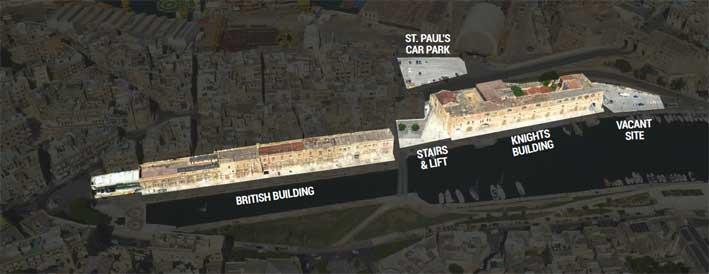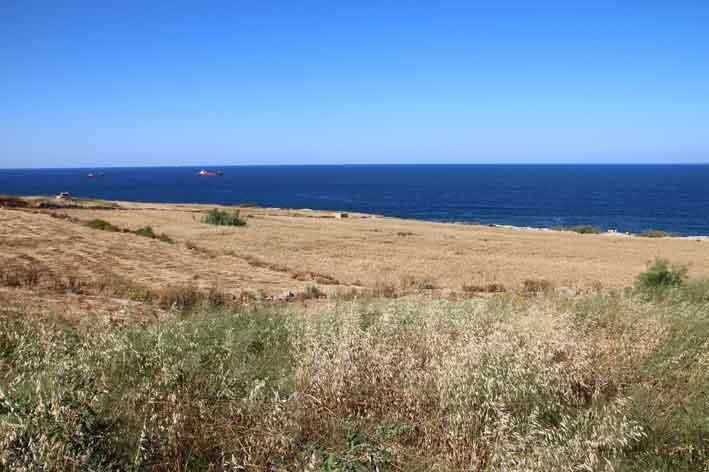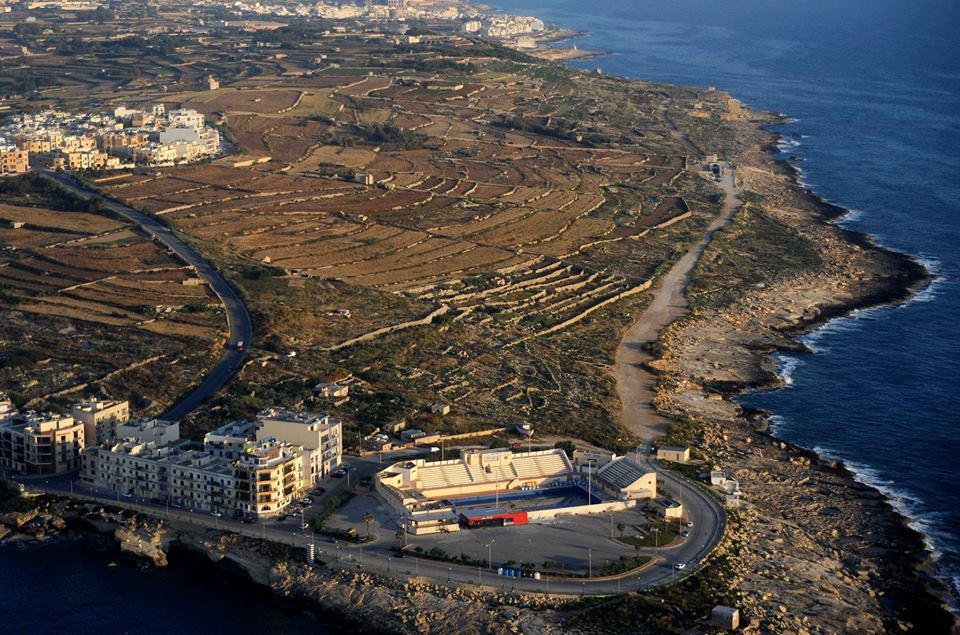At a maximum rental payment of just over €200,000 per year for nearly 42,000 square metres of land, it could be justifiably argued by just about any yardstick that the government is renting out the American University of Malta Zonqor-Cospicua campus on the cheap.
But when one factors in the stunning sea views and pristine Outside Development Zone land at Zonqor, and the priceless heritage value of the buildings on the Cospicua side of Dock One being handed to the university’s developers on a silver platter, the arrangement can be described as nothing short of an outright steal.

Although the details of the contract the government has signed with the developers, the Sadeen Group, have not been made public, the government’s own analysis presented to journalists last week shows that the government will, in year one, be charging the American University of Malta €179,682 in rent for the use of a site at the ecologically sensitive Zonqor Point and another at the historic Dock One area in Cospicua.

By the 10th year of operation, the yearly rental fee will rise to €204,206 for the two sites – comprising Zonqor (18,000 square metres of ODZ land and 13,000 of non-ODZ land) and Dock One (10,800 square metres of heritage built by the Knights and the British).
Combined, the assets have been handed over for an average of €4.88 per square metre – a bargain basement price, especially considering the inclusion of priceless national heritage and environmental assets being handed over.
From a rent of €179,682 in the first year, annual rental payments will increase in two per cent increments during the second and third years of operations, before tailing off to a 1.3 per cent annual increase from year four of operations until year 10, by which time AUM will be paying the government €204,206 in rent for the two sites.
While the rent burden will be a significant part of AUM’s costs during its first year of operation –compromising 15 per cent of all costs – by the 10th year of operations rent will only make up 2.5 per cent of AUM’s operational costs.
Questions sent to the government on this and other matters remained unanswered by the time of going to print yesterday.

The SmartCity comparison
SmartCity comparison may not be exactly compatible, but it is pertinent considering the way in which it has been bandied about in relation to the AUM project.
Visiting Marsascala last Saturday, the Prime Minister remarked that the AUM model is the same as that used for Smart City.
Dr Muscat said, “Smart City was given land, sold for a few cents per square metre, yet today that land is worth nearly €1,000 per square metre. Did we give an investor [of the AUM] land for free? No, the investor is giving something back in the form of value added, and this project will not only bring in 4,000 students, but will also create jobs.”
When the SmartCity project took off, the government had transferred 358,000 square metres of land of former industrial estate land in Ricasoli to Tecom for an annual ground rent of Lm65,000 (approximately €150,000) a year, which Tecom was bound to begin paying after eight years.
One-third of the site was to remain public and accessible around the clock, in contrast to the university project, leaving 239,000 square metres at the developers’ disposal.
Given that, it transpires that the land for developers at SmartCity worked out at roughly €1.60 per square metre – far cheaper than the rental fees to be received by the government from the AUM.
But the clincher is that the government at the time, however, took a nine per cent shareholding in SmartCity Malta, instead of taking a USD20 million premium for the land.
Meanwhile, just across Grand Harbour from the Cospicua campus, Valletta Cruise Port (formerly VISET) pays an annual ground rent of €556,049 for the 48,000 square metres comprising the Valletta cruise liner terminal at the Valletta Waterfront to Malita Investments, a government company. Over 500,000 cruise liner passengers visited Malta last year.

Government banking on strong effect of AUM investment
The government may not be making much from the rent of the two sites, but it will take solace in the strong multiplier effect the investment by the Jordanian Sadeen group will generate.
Projections show that direct expenditure in the Maltese economy will peak at €110.9 million during the 10 years of operation.
The bulk of this will be made up of spending by students on college and residences at a projected €69.8 million, followed by general living expenses totalling €27.2 million and spending by visitors totalling €13.8 million.
One of the Prime Minister’s main pitches for the AUM project is that it will help regenerate the ‘forgotten’ south end of the island.
The social impact assessment carried out for the project included a survey of residents and other stakeholders in Marsascala.
The authors claimed that the residents were “generally in favour” of the project, even if some expressed concerns about negative impacts, namely traffic congestion and the thought of the locality turning into “another Paceville” with the opening of more bars and clubs.
The report does not go into specifics and does not mention how many people were approached. It does say, however, that it was impossible to get politically unbiased replies, seeing that the case has been highly politicized.

AUM projected to lose €579,211 in first year, and earning €51 million by 10th
During its first year, AUM is expecting to take in 120 students and employ six academic staff, with operational costs of €1.1 million. By year 10, the university will have reached its maximum capacity, hosting 4,000 students and employing 200 academic staff.
Although operational costs would have increased to €8.1 million by then, the AUM return on capital will have mushroomed from a projected loss of €579,211 during the first year of operation to a positive return of €51 million by the 10th year.
This means that AUM will be making significant profits from the use of these two sites on public land, yet the government has curiously chosen to rent it out on the cheap.
The Cospicua campus, described by Dr Muscat as a gift to the locality, will see the regeneration of the buildings along Dock Number 1, including the British Building and the Knights Building.
A small part of the recently launched project, namely the steps near the steel bridge, will be taken up by the campus but public access along the quay will remain. The Cospicua campus, which will house two of the AUM’s five colleges, will comprise 10,800 square metres.
The use of the Zonqor site means that the Marsascala swimming pool and its car park will be removed to make way for part of the campus.
The road running along Zonqor Point will be removed, but the government is assuring that public access to the shoreline will remain.

Academic staff to student ratio on the low side
One of the main metrics used to assess and compare the relative quality of universities is the academic staff to student ratios.
In the United Kingdom, the top 25 universities in this regard all have fewer than 14 students for each member of academic staff.
The AUM will be starting its life with 120 students and six academic staff, meaning it will have a student-academic staff ratio of 20.
This ratio will improve during the second year, falling to 13.3, but once the university is in full swing with 4,000 students the ratio will again climb to 20.
Although looking at the ratio in isolation is not necessarily indicative of the overall quality of education at AUM, in general the more academics the university employs, the more supervision students will enjoy, meaning they will get more value from their degrees.